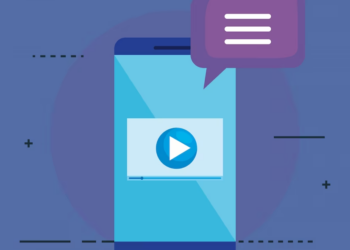Introduction
Education has undergone a remarkable transformation in recent years, driven in part by advancements in technology. Traditional teaching methods, while still valuable, are no longer the sole means of imparting knowledge. The integration of educational games and learning apps into the classroom and beyond has ushered in a new era of interactive and engaging learning experiences. In this blog, we will explore the rise of educational games and take a closer look at what makes learning apps effective tools for acquiring knowledge and skills.
The Evolution of Education
Education has evolved significantly over the years. The shift from rote memorization to active learning has been a crucial aspect of this transformation. Traditional classrooms relied heavily on lectures, textbooks, and written assessments. However, the advent of digital technology has revolutionized the way we learn and teach.
Educational games and learning apps have emerged as powerful tools to enhance the learning process. These digital resources leverage the principles of gamification to make learning more engaging, enjoyable, and effective. As a result, they are gaining widespread popularity in schools, homes, and corporate training programs.
Benefits of Educational Games and Learning Apps
Engagement and Motivation:
One of the most significant advantages of educational games is their ability to captivate and motivate learners. The element of competition, rewards, and instant feedback keeps students engaged in the learning process.
Learning apps often employ interactive multimedia, such as videos, animations, and quizzes, to make lessons more engaging and appealing to a broader audience.
Personalized Learning:
Learning apps can be tailored to individual learning styles and paces, allowing learners to progress at their own speed.

Adaptive algorithms within these apps identify areas where students struggle and provide additional practice, ensuring a personalized learning journey.
Real-World Application:
Many educational games and apps simulate real-world scenarios, enabling learners to apply their knowledge and skills in practical situations.
This approach promotes critical thinking, problem-solving, and a deeper understanding of the subject matter.
Accessibility:
Learning apps are accessible on various devices, including smartphones, tablets, and computers, making education more accessible to a broader audience.
This accessibility is particularly valuable for remote learning and reaching underserved communities.
Immediate Feedback:
Educational games and apps offer instant feedback on students’ performance, allowing them to identify and correct mistakes in real time.
This immediate feedback helps learners track their progress and build confidence.
Gamification Elements:
Gamification elements, such as badges, leaderboards, and achievements, add an element of fun and competition to learning, encouraging students to set and achieve goals.
Continuous Improvement:
Learning apps can collect data on students’ performance, enabling educators to identify areas that need improvement and refine their teaching strategies.
Examples of Effective Educational Games and Learning Apps
- Duolingo: A popular language-learning app that combines gamification with bite-sized lessons to make language acquisition enjoyable and effective.
- Minecraft: Education Edition: This sandbox game is used in classrooms to teach various subjects, including mathematics, history, and computer programming, by allowing students to build and explore virtual worlds.
- Kahoot!: An interactive quiz platform that turns learning into a game, encouraging student participation and knowledge retention.
- Codecademy: A coding platform that uses gamification to teach programming languages and web development skills.
- Prodigy: A math game that adapts to individual student levels, providing a fun way to practice math concepts.
Challenges and Considerations
While educational games and learning apps offer numerous benefits, there are also challenges and considerations to keep in mind:

- Quality Control: Not all educational games and apps are created equal. Ensuring the quality and effectiveness of these tools is essential.
- Screen Time: Excessive screen time can be detrimental to physical and mental health, so balancing digital learning with other activities is crucial.
- Accessibility: Access to technology and the internet can be a barrier to using educational apps, especially in underserved communities.
- Teacher Training: Educators need training to effectively integrate these tools into their teaching methods.
Conclusion
The rise of educational games and learning apps has transformed the educational landscape, offering engaging and effective ways to acquire knowledge and skills. These tools leverage the power of gamification, personalization, and real-world application to enhance learning experiences for students of all ages. As technology continues to advance, we can expect even more innovative and effective educational games and apps to shape the future of education. With careful consideration and implementation, these digital resources can play a pivotal role in preparing learners for the challenges of the 21st century.
















